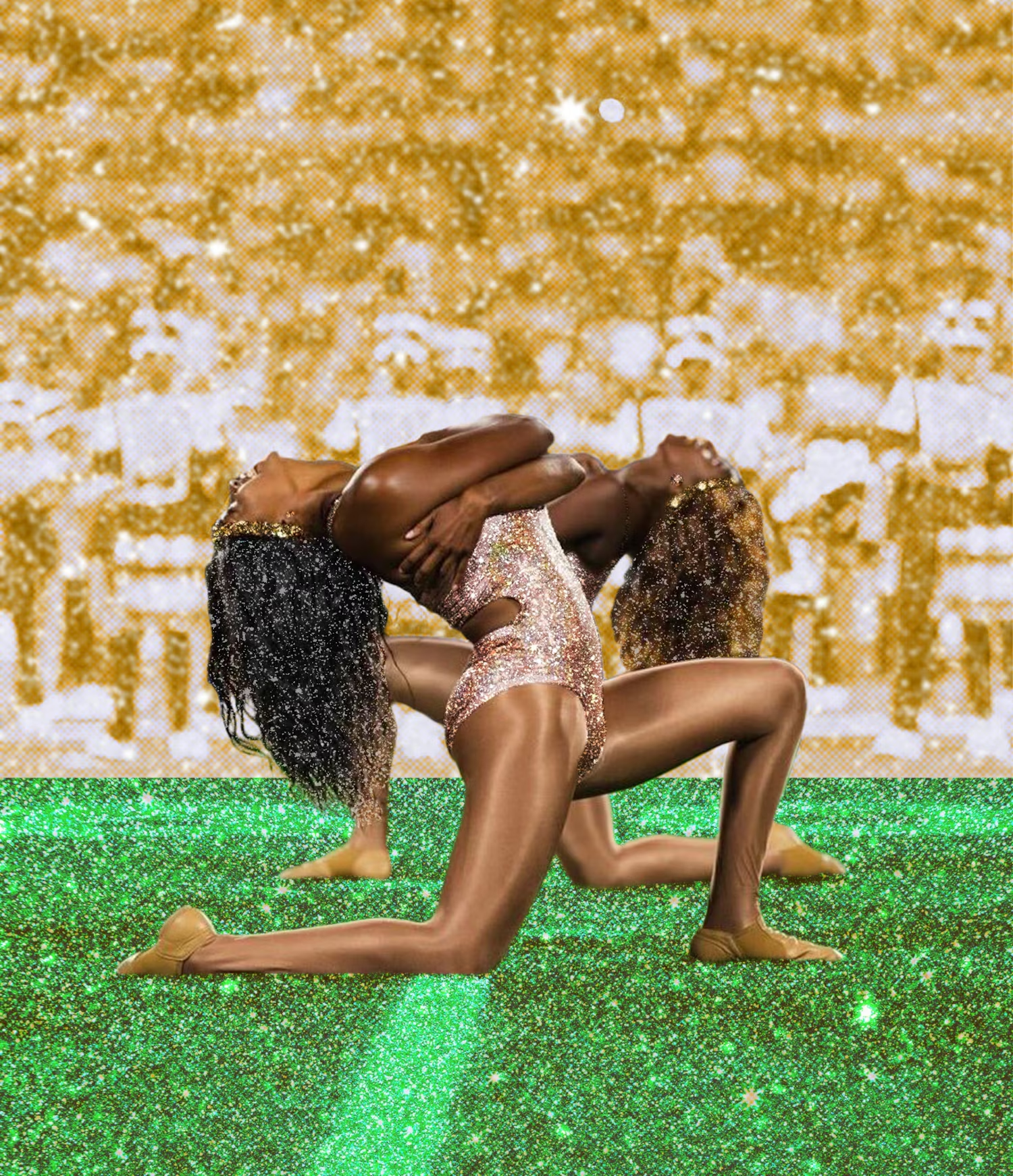Possibly deriving from the Dutch word “Dansmarietjes,” the original majorettes twirled batons in their performances. A style birthed in the American South, today it has morphed into HBCUs dance teams.
Majorette dancers mix multiple styles of dancing, including jazz, hip-hop, ballet, burlesque, cabaret, kick lines and more, to entertain audiences while simultaneously honoring the dancers who came before them. “I think if you can define it, it’s a dancer who cannot be defined,” said Sydney Clark, a fourth-year member of North Carolina A&T State University’s Golden Delight auxiliary majorette team. “It’s a person who is doing things with their body that physically or mentally you can’t really comprehend, but physically you can’t take your eyes off of them.”
Performances by majorette teams are often grand, with props, bright outfits, cohesive hairstyles, tricks and dances in collaboration with their school’s band song selections, which often reflect Black culture on HBCU campuses.
Although Beyoncé’s tribute to HBCU majorette culture was the first time some people were exposed to the lifestyle, the first known majorette performance dates back to the late 1800’s.
Black culture and music has always had such a broad reach in the world,” Greene said. “I guess the natural transition would be that HBCU culture is now what’s popular.”
For those involved in HBCU culture, majorette dance is important not only to the campus but to Black culture as a whole, adding to the connection between Black people and dance in general.


